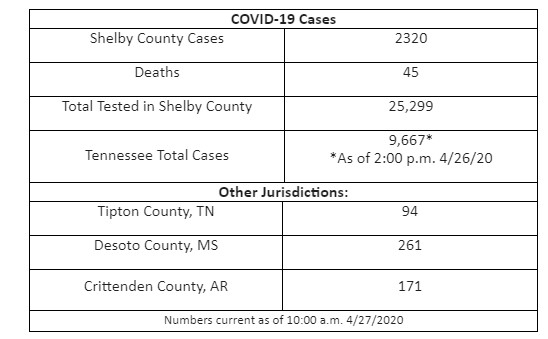MEMPHIS, Tenn. — Members of the COVID-19 task force discovered a fairly dramatic up-tick in new infections over the weekend. Now they’re looking for an answer why.
Over the past week, the local task force has been documenting 30, 40, 50 new infections a day in Shelby County. But this past weekend, the number of new cases more than tripled.

“I think that we obviously worry a little bit whenever you see a spike,” said Dr. Scott Strome, dean of the College of Medicine at UT Health Science Center. “But I think you have to take that into the context of what we know and not really panic about any individual day.”
Strome said you have to look at the big picture.
“As we’ve opened up sites in Frayser and North and South Memphis, etc., the testing numbers are going up. And as we test more people, we can expect to see more cases.”
He and members of the task force believe increased testing, at hotspots like jails and nursing homes led to the spike, and not necessarily, a sudden surge.
“I am cautiously optimistic that we’ve done a good job here, but we’re going to have to keep doing it and we have to get people used to the idea that this is a new normal,” he said.
A new way of life because new studies are suggesting the Memphis/Shelby County surge of cases may not come until June. One model predicts it could be August.
That data is based on what the county is doing with regard to social distancing, said task force member Dr. Jeff Warren.
“Some of that data may be trying to project what happens if we open up too quickly or don’t monitor as we open up when we don’t have enough data to make sure that we’re not opening up too fast,” Warren said.
Strome said it’s possible we may be preparing for a surge that may never happen.
“You know, that absolutely could happen. And I think everyone in some way would be absolutely delighted to be wrong,” he said.
It used to be that one person was infecting four or five others in Shelby County, but now that number is down to 1.2.
Both doctors agree that infection rate needs to get below 1 for several weeks to avoid the surge and stop the virus from spreading.



















